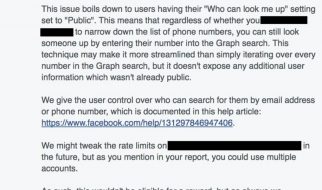
I am a post-doctoral researcher who helps run a research group. Each week we devote a half-hour of our group meetings to discussing important topics to young academics. Last fall I wanted to assign an article on how to submit a journal article ? a format intrinsically connected with professional success and the pleasures of being an academic. I have read many books on writing for academics, such as Howard Becker?s Writing for Social Scientists, Thinking Like Your Editor, and How to Write a Lot (just to name a few). However, none directly addressed how to avoid the pitfalls of submitting a journal article for publication. So I wrote one for my students, which turned into the story in front of you.
Here I?ll walk you through how to submit a journal article. This process involves selecting a journal, preparing the submission, evaluating reviews, revising the manuscript (fingers crossed), and publicizing the article after it appears. This guide is biased towards communication ? my discipline ? but will be applicable to others as well.
The Perils and Joys of Journal Articles
Academics rarely write just for the sake of writing. The idea of the ?life of the mind? is a cozy metaphor that rarely reflects reality. We?re usually writing for a particular purpose. Maybe we want to write an op-ed (opinion editorial) piece for a newspaper, a monograph book, or a journal article. Each of these formats and audiences requires different considerations. For an op-ed piece you?ll need to relate your work to a public audience in an accessible way. A book might unfold over several years and require writing a book proposal, a very specific genre of writing. But nothing captivates most academics more than journal articles.
There are several reasons why the journal article is the most important genre of writing in academia. In most academic disciplines success is tracked through journal articles. Recently a friend told me a story of how her department evaluated her work for tenure. Her chair assembled a spreadsheet of every article and the impact factors of each journal ? a number that describes how influential the journal is. The total dictated her likelihood of receiving tenure and thus, staying at her job. This stressful example demonstrates how in an academic career journal articles dictate success or failure. But writing journal articles can and should also be pleasurable!
For many academics, journal articles are an exciting format for their scholarship. They let them work on challenging questions and have a public conversation with peers. Writing journal articles also helps us explore new topics and disciplinary terrain. I am an interdisciplinary scholar and regularly publish in journals outside my own discipline, communication. Academics are rarely satisfied with what they worked on last year. There is always another idea just around the bend in the road! Truth be told, it is kind of addictive to do research. This is the exciting, and occasionally frustrating, part of academic life.
While I can?t predict your article?s chances, I can tell you that manuscripts won?t get accepted if you don?t submit them! That starts by selecting a journal.
Selecting a Journal
The first step is to figure our what might be the best journal to publish in. The journal you select dictates how you write the article. For example, many journals exclusively accept empirical articles and require a clearly delineated methodology, while others embrace critical and cultural approaches where a methodology is less stringently enforced. Other journals permit more experimental formats. Engaging Science, Technology & Society accepts submissions formats such as review essays, critical engagements, and ?traces,? in addition to standard research articles. It will save you time if you decide on a journal before you even start writing!
If you are new to your discipline you might not know what journals are most important. It is difficult to track them, since there are always new journals appearing and old ones fading away if there is not sufficient interest. How do you find out about high-quality journals? All kinds of places! You might hear about them from fellow students or professors. Maybe you notice a journal appears in Google scholar searches for your research topic. Once you start to find journals, keep track of them. An easy way to accomplish this is by maintaining a spreadsheet. Mine is a simple Google spreadsheet with columns for title, category (e.g. communication, political science, STS), impact factor, ranking, open-access (yes/no), and comments.
How should you evaluate a journal? There is no easy answer because there are many factors. Impact factor and ranking are the most obvious. Impact factor is a statistic: the frequency each article in a journal has been cited each year. Ranking is more of a rough guide than a number that dictates how important a journal is for your discipline. Interdisciplinary journals often receive rankings for multiple disciplines. For example, American Behavioral Scientist has expanded from its origins in psychology. As a result, it currently is ranked 76/121 in clinical psychology, and 30/96 in interdisciplinary social sciences. While these and other statistics have been criticized, as my friend?s example of tenure review shows, they remain a way institutions evaluate potential for promotion.
You may be attracted to other aspects of a journal that escape statistics. thematic fit matters; a good sign you?re publishing in the right journal is you are citing papers it has published! Maybe its review board has members you suspect would be sympathetic to the paper you?re writing, or there is a special issue in this journal that would be a great fit. Some academics prioritize open-access publishing. Being open-access means that, at minimum, people can access articles for free ? although it also often means that they don?t charge for publishing. Science is built on being able to draw on and critique the work of others.
But beware, some unscrupulous journals tout their ?open-access? status while tricking out statistics so they appear to have a high reputation, only to extract exorbitant fees from authors. The librarian Jeffrey Beall maintains a list of such ?predatory? open-access journals. If you stay in academia long enough you?ll start to receive a daily dose of spam emails from these unscrupulous publishers and be able to recognize them. If you are unsure, check Beall?s list and evaluate their editorial board ? do you see anyone you know and respect? If in doubt, ask a trusted professor!
All these factors ? impact, relevance, and open-access ? should be part of your decision to publish with a journal. Then there are pragmatic factors, such as how quickly you want your article to come out. When I was just starting out in academia my friend danah boyd stressed the importance of publishing in journals that have a rapid turnaround time. Websites like JournalReviewer let you get a sense for how quickly you can expect your manuscript to go through peer review. If you are looking at a timely topic ? like the spread of misinformation in the 2016 presidential election ? you might want to get your work out rapidly. To this day, danah blogs about work in progress. She also makes working papers and transcripts of her talks available to the public at no cost. This cuts through barriers of journals that can often prohibit the spread of scholarship outside of academia. Publishing early and often has been part of her recipe for success as a leading public intellectual, which led to her being director and founder of the Data & Society research institute.
Preparing and Submitting the Manuscript
Once you have found a suitable journal, start writing the article using their formatting requirements. Re-formatting articles for different journals can easily eat up your free time! You?ll find a journal?s publishing requirements on their website under a link with a title like ?information for authors? or ?submission guidelines.? There you?ll find information like article word count and preferred style. Journals accept articles written in specific styles such as APA or Harvard. Some even insist on slight variations on established styles.
Keeping track of references will can bog down your writing. One way to keep track of references is to use the right writing tools. Citation management software like Zotero and Endnote is essential to maintain your sanity. They also let you use formatting templates to automatically generate in-text citations and the references section. This will pay off if you submit to a different journal later because you won?t have to hand-format references!
There are several things to remember at the moment you want to submit your article. You want to click submit, but wait! Do one last editing pass for grammar and spelling. Double-check formatting requirements, and inclusion of graphics. Some journals request tables and figures in separate documents, while others are fine with them being in the body of the main document.
If given the option, write a cover letter to editors. This helps them get a feel for who you are and how they can best assign reviewers to your manuscript. Feel free to suggest reviewers if this question is posed by the journal in the submission form. Obviously, do not suggest a reviewer that is able to identify your work, or who has read the manuscript. A grad student suggesting their advisor as a reviewer is an obvious no-no. However, in my experience, editors are grateful when you save them time by suggesting potential reviewers in sometimes arcane topic areas.
Evaluating Reviews
The cornerstone of academic publishing is the peer review process. Typically it is ?double-blind? ? neither reviewers nor authors know who the other party is. While there is much to love and hate about peer review, here I will cover the pragmatics of receiving and responding to feedback. It may come in a day or six months.Prepare yourself for criticism, and don?t be frustrated if the reviews are phrased very directly. Feel free to set the email aside to read when you?re in a good mood and have time to think through their feedback.
There are four types of reviews you might receive:
- Desk reject: an editor may simply say an article is not suitable for their journal. Hopefully this does not happen if you have done your homework on selecting a journal, but it still occasionally does. Be polite and gracious, then move on to the next journal that looks like it might be receptive to your article.
- Accept: a straight acceptance without revisions is extremely rare. In ten years of publishing over fifteen articles I have never received one. When reviewing manuscripts I have given, to the best of my memory, two straight acceptances. Simply put, there are always a few things to address to get a manuscript up to snuff.
- Reject: in this case the manuscript was sent out for peer review, and reviewers deemed it not suitable for publication. This does not mean that this was a fruitless endeavor, since you can read the reviewers comments. What it does mean is there are sufficient issues with the manuscript that the reviewers can?t identify a clear path for revision. However, they should justify the issues they see, which can be helpful feedback for publication. Be sure to thank the editor and reviewers for their time, even if you don?t agree with their decision.
- Revise & resubmit: many submissions will receive an ?R&R.? This means the reviewers have suggested changes they believe will bring a manuscript up to the level where it would be suitable for publishing. Often an R&R will be two reviewers suggesting revisions. However, you could also get one enthusiastic reviewer and one recommending reject. In these cases, the editor may bring on a third reviewer to make their decision, which can make your life a little more difficult! Because R&Rs are the majority of responses, I?ll address how to deal with them in a section below.
How to Handle the R&R
Not all R&Rs are the same! Some request very minor edits that you can accomplish in an hour or two. These are basically acceptances with a few tweaks. Others might ask you to do seemingly impossible tasks, like collect new data or re-write your paper using unfamiliar theory. Before you panic, read the note from the editor carefully. Are they signaling what changes they expect you to make? A good editor will provide some guidance on the path to acceptance. It can be difficult to read unvarnished comments about an article you?ve put so much time into. It is sometimes difficult not to take feedback personally, but just remember that reviewers will evaluate your work on factors that you may not have considered. They may misunderstand your primary argument, or have never evaluated an article that uses your chosen methodology. Reviewers are fellow humans who just happen to be gatekeepers to your article getting published.
Once you read the reviews, move forward with an understanding that reviewers are trying to improve the piece. If you decide to revise the manuscript, make a list of their requests and move through them one at a time. As you address their requests, make a note of what you did and highlight the changes in the updated manuscript. When you submit the review be sure to include your (still anonymous) response to the reviewers, showing that you paid attention to their feedback and addressed each of their comments. If there is a suggestion you did not act on, explain why you did not follow their advice. Keep your responses relatively professional. Reviewers probably won?t insist you take every one of their suggestions, but they will want to know why you didn?t. When there is not a clear agreement on whether an article should be published, you may get the surprise of three reviewers. An additional reviewer is commonly invited to settle a disagreement. While this helps editors make a decision, it can make your life more difficult, because you?re in the position of making changes to please three people, at least one of whom probably already doesn?t like your work, and you have no idea if they will be assigned to review the manuscript next round. Don?t be afraid to withdraw your manuscript from consideration if the changes would be too difficult to accomplish. Remember, it will be your name on this article at the end of the day! The editor will not be offended if you withdraw a manuscript ? it happens all the time. Do however write a kind note explaining your decision, and address some of the reviewer?s feedback before re-submitting to another journal. After all, you may get one of the same reviewers again, and the last thing they want is an article they?ve already given feedback on!
Finalizing and Publicizing the Article
As you move through the review process you will eventually get to the point the reviewers indicate they are fine with the draft. In rare cases they may recommend reject after a few rounds of revision. Once accepted, the editor may have a few final suggestions. At this point your article will move into the editing stage, when a different editor makes grammatical and spelling changes to help your article shine. Then you?ll review a ?proof? ? a PDF of exactly what your article will look like. You?re probably tired of this article by now, but read carefully! Line editors may have made changes that alter the argument you?re making. This is never intentional, and they will change it back if you request it. Also review proofs at a time when you?re able to concentrate! One of my articles has two minor grammatical errors that still haunt me because I read it late at night and not over my morning coffee when I had the most energy.
There are yet two final steps after you submit that final marked-up PDF proof. First, celebrate! You?ve crossed a milestone. Don?t just add another line to your C/V ? do something nice for yourself. Go out to dinner with your partner, buy yourself a nice bottle of your favorite beverage, or see a movie. Academics are terrible at rewarding themselves for hard work. We are much better at rewarding work with yet more work! But this is not a particularly healthy way to live. Second, once a ?pre-press? version comes out online ? this is the digital copy that is identical to the published version in print ?if your journal permits it, publicize it on social media and upload to your website. If your university has staff for publicizing work, be sure to reach out to them too. This will help get the word out about your scholarship and it can even start further conversations.
I hope this article has helped you think through the process of submitting a journal article! Please share it if you found it helpful.


